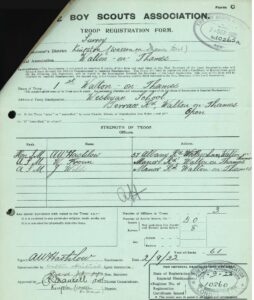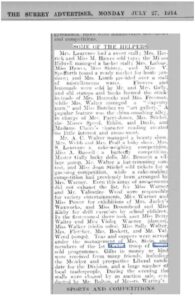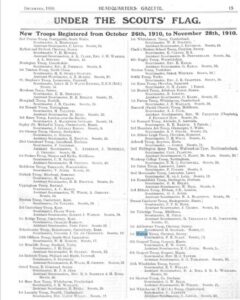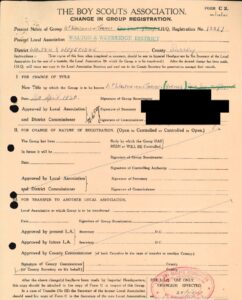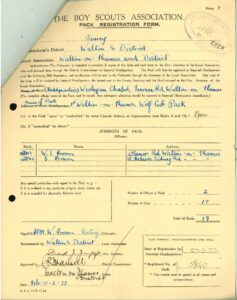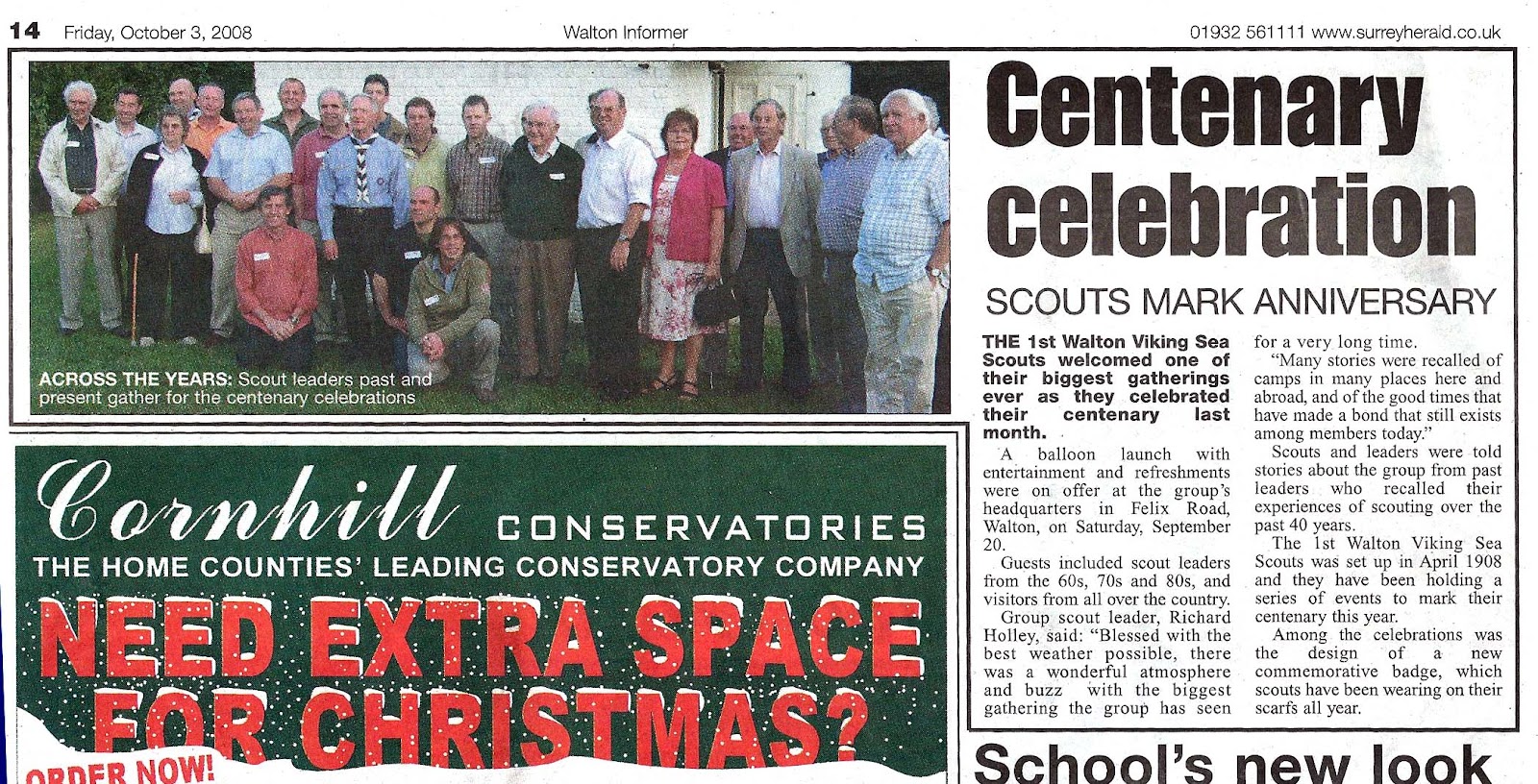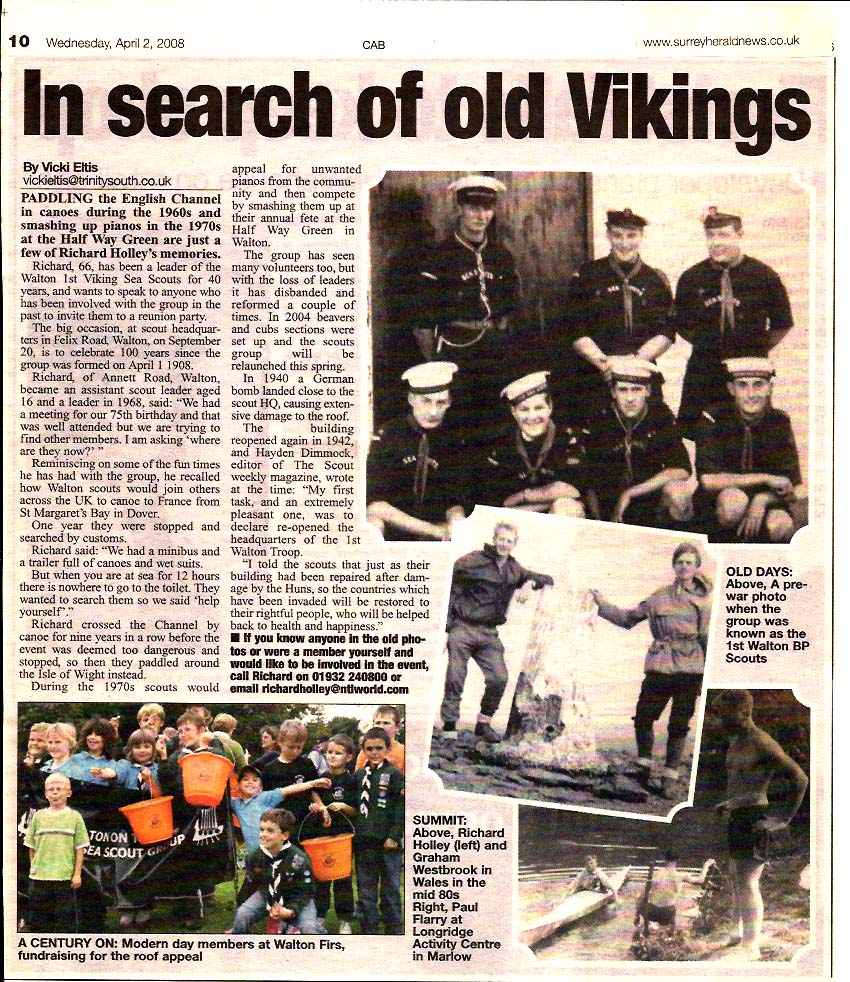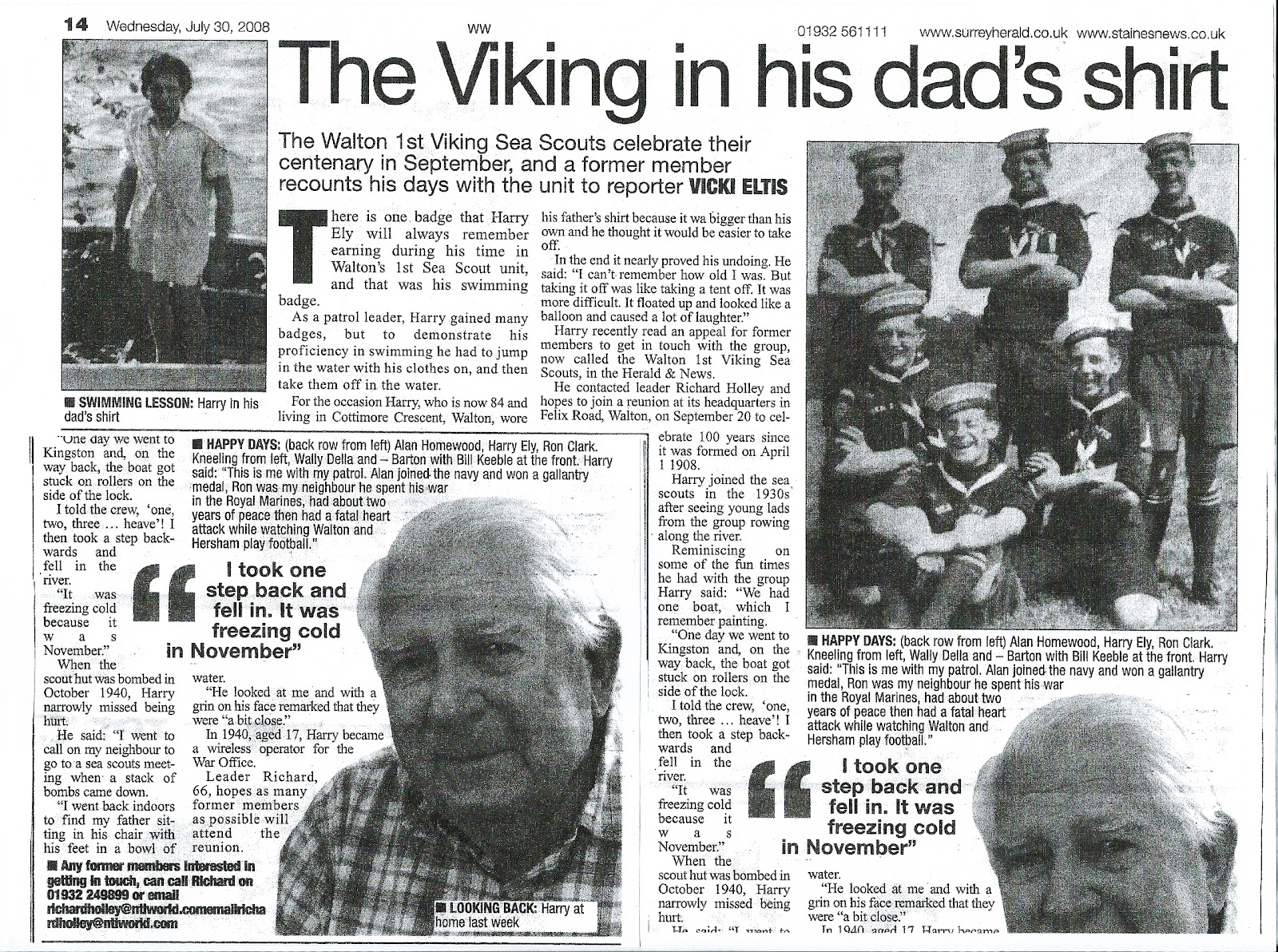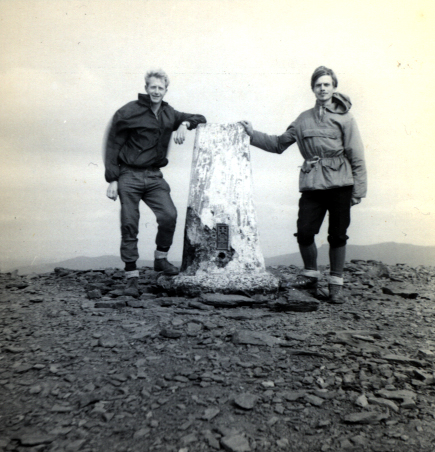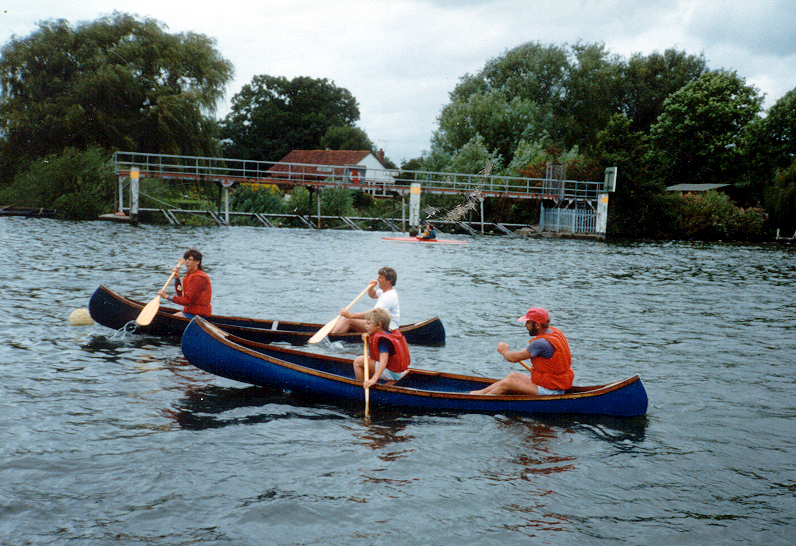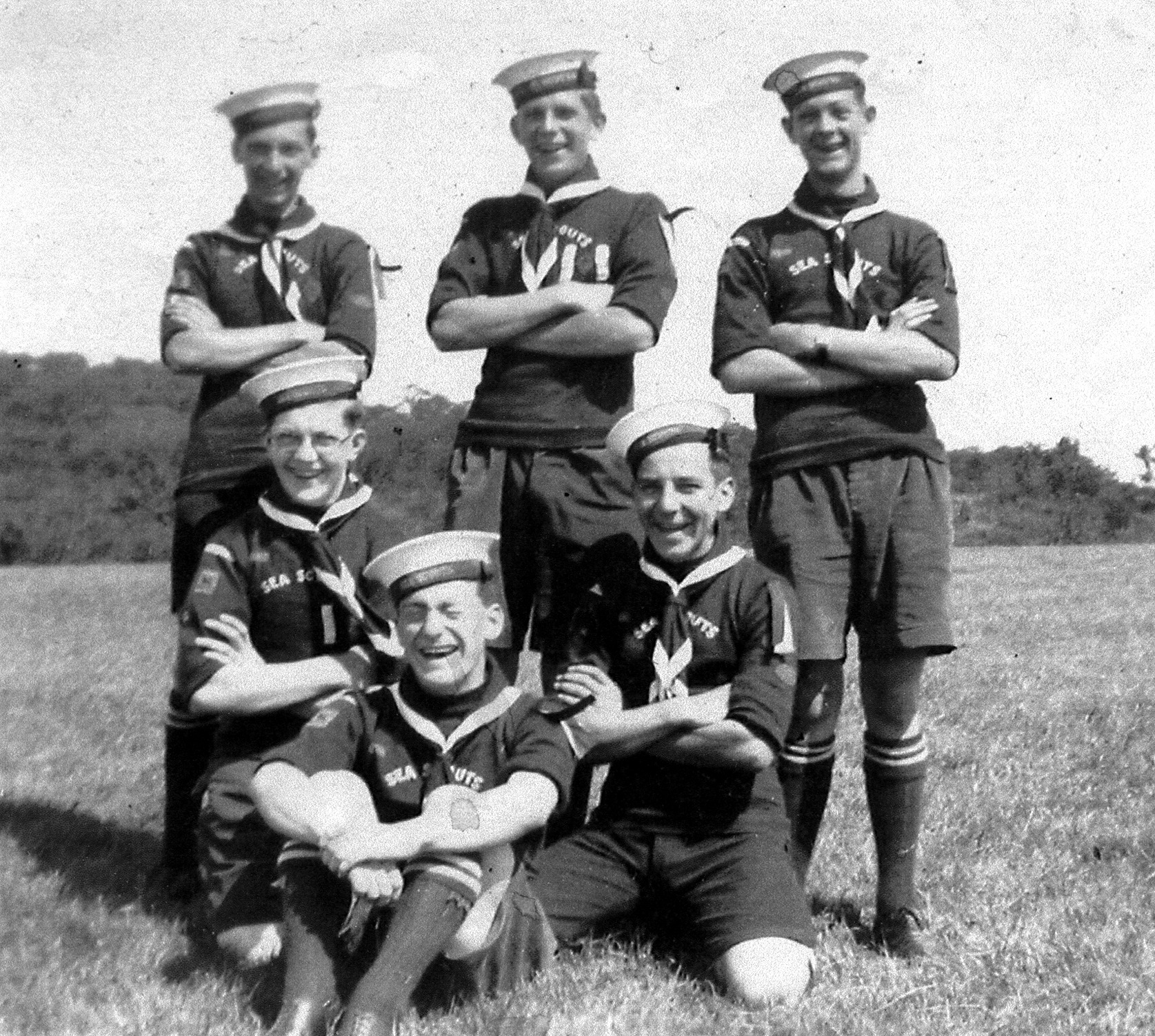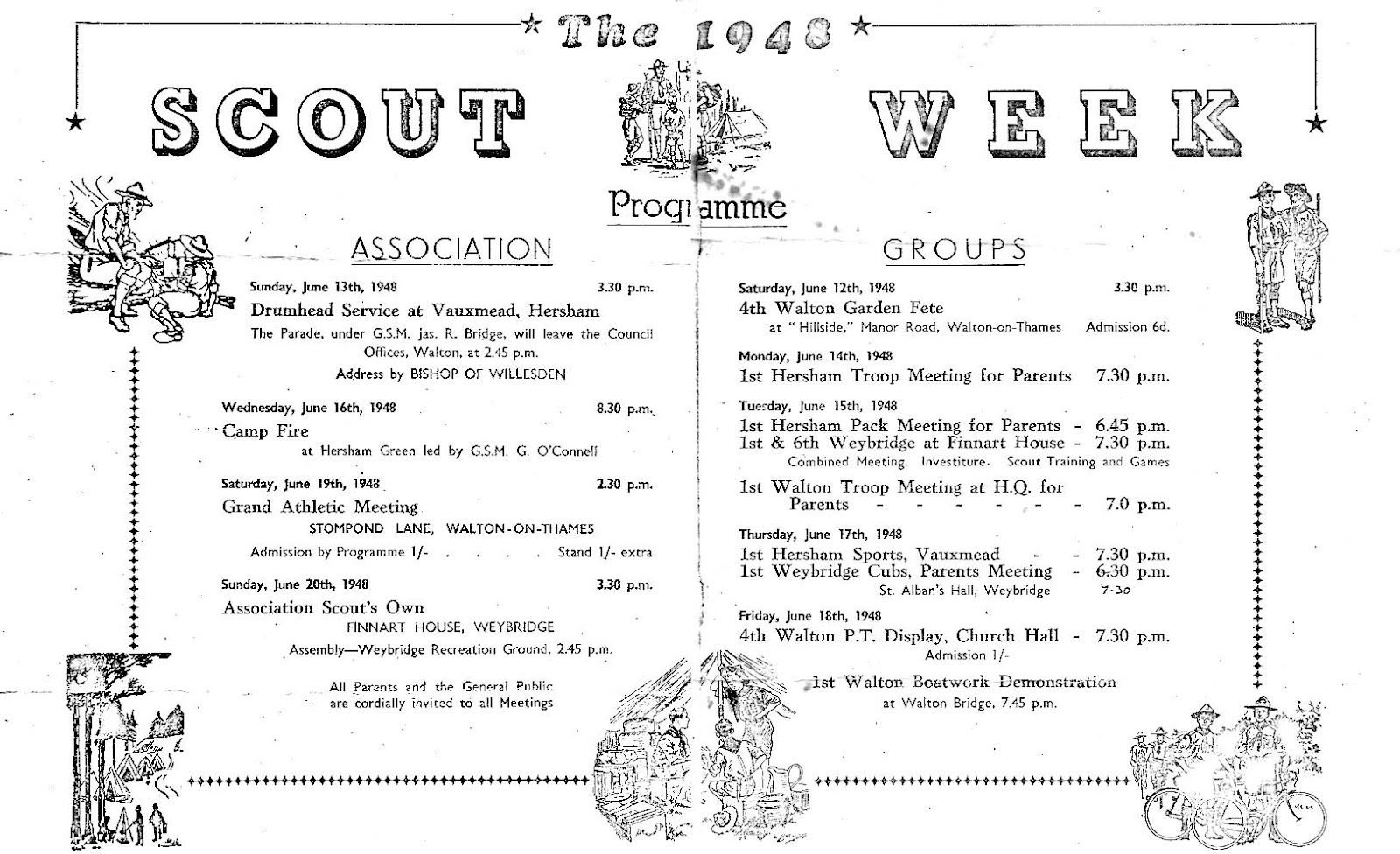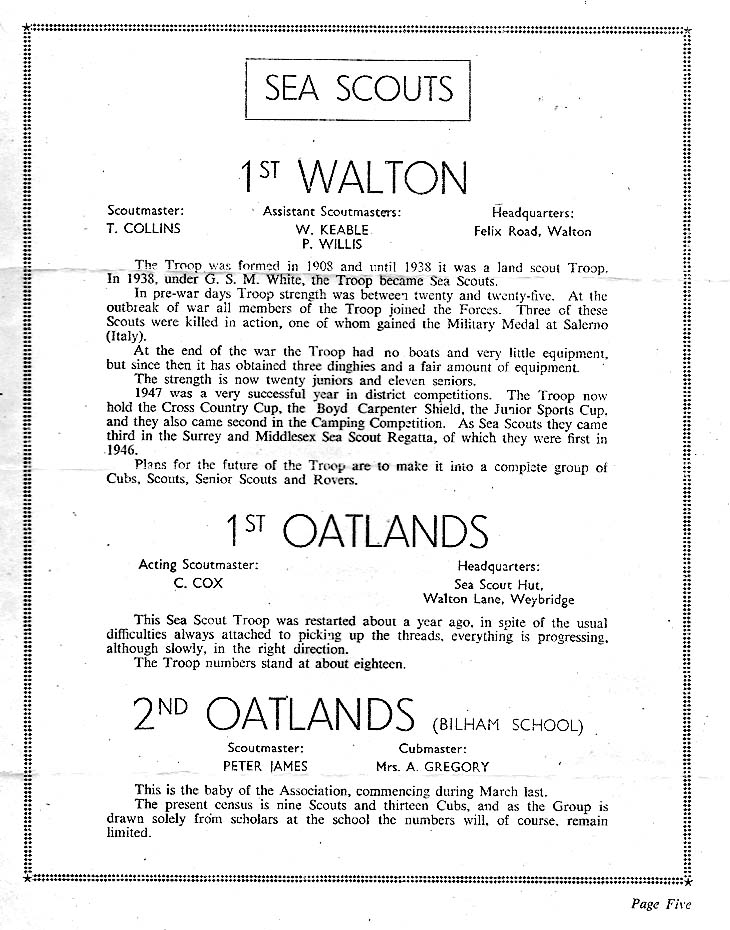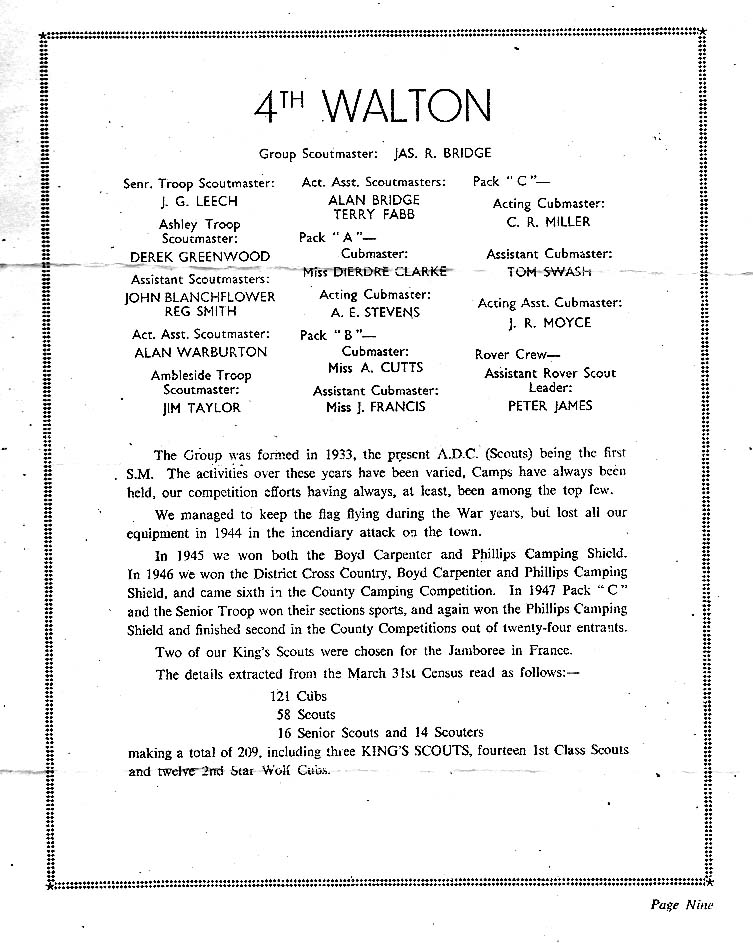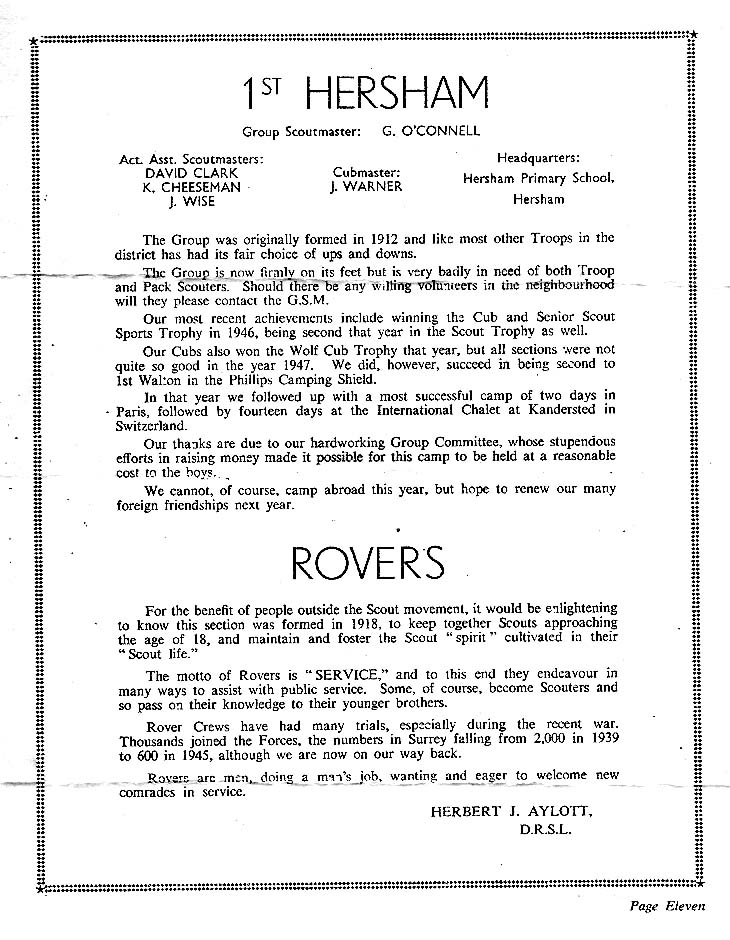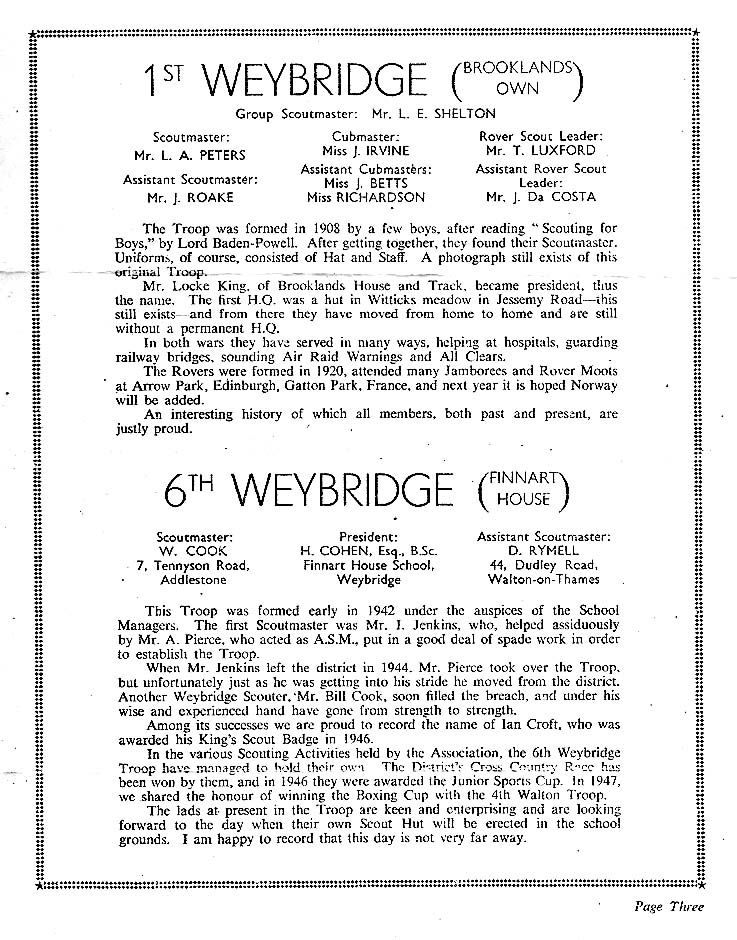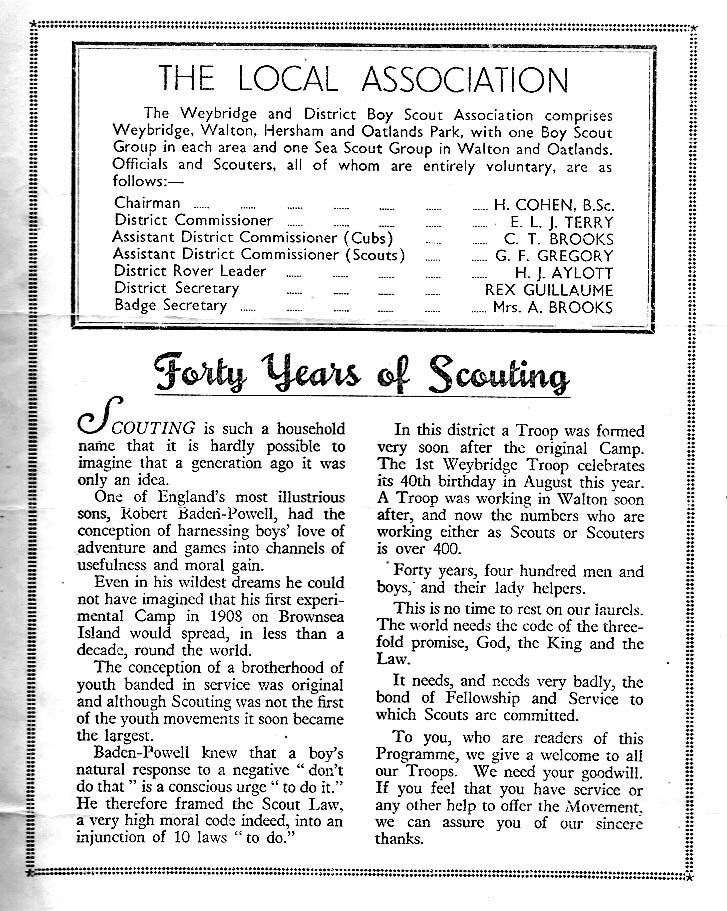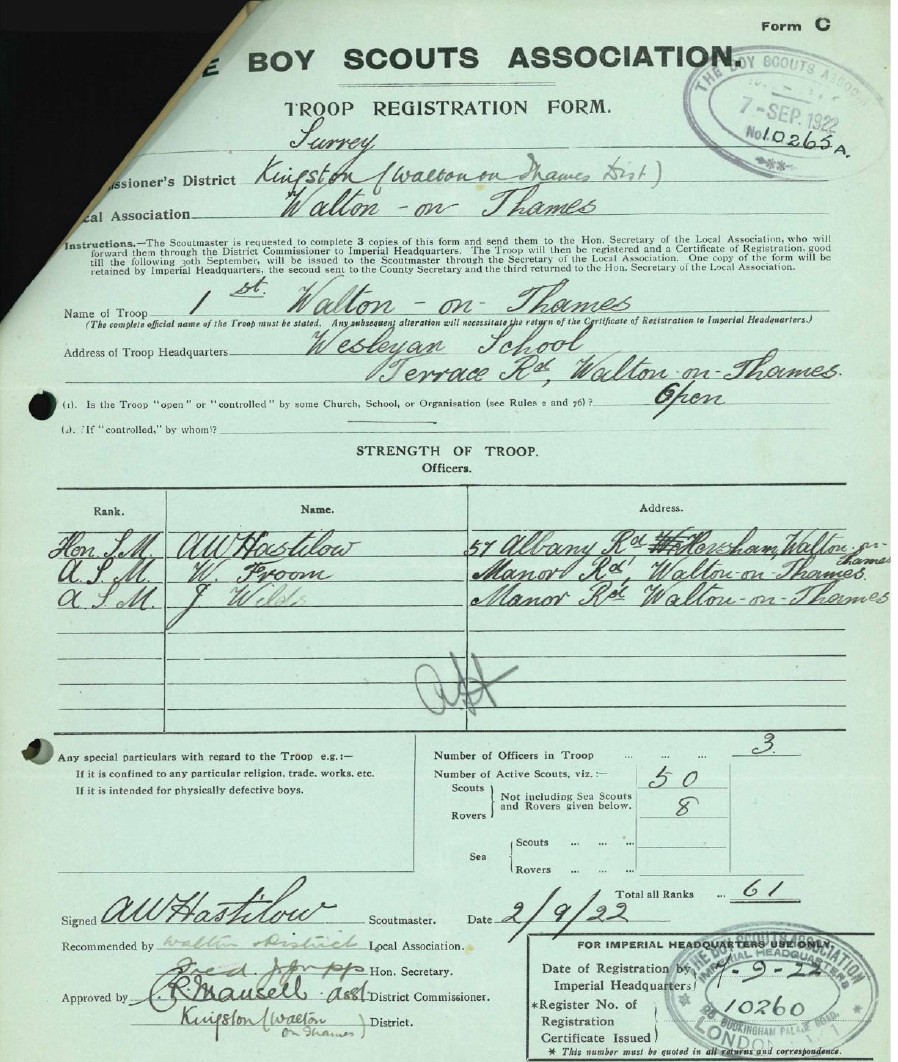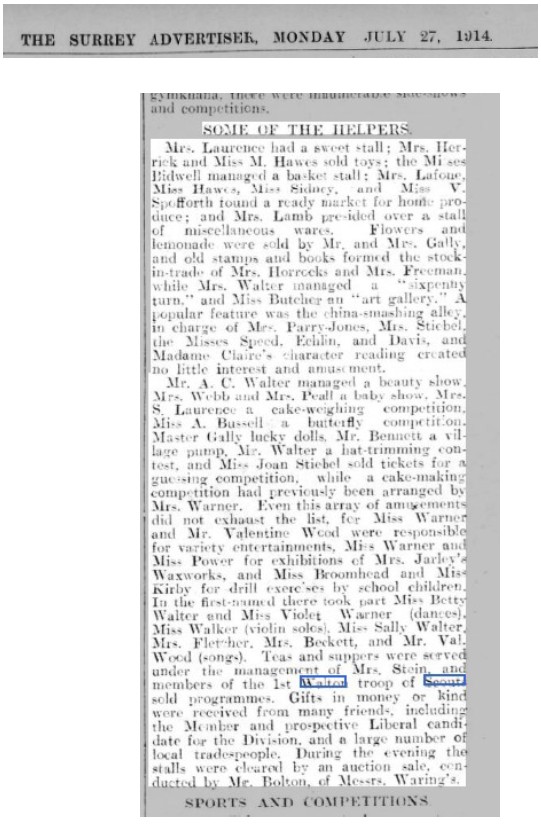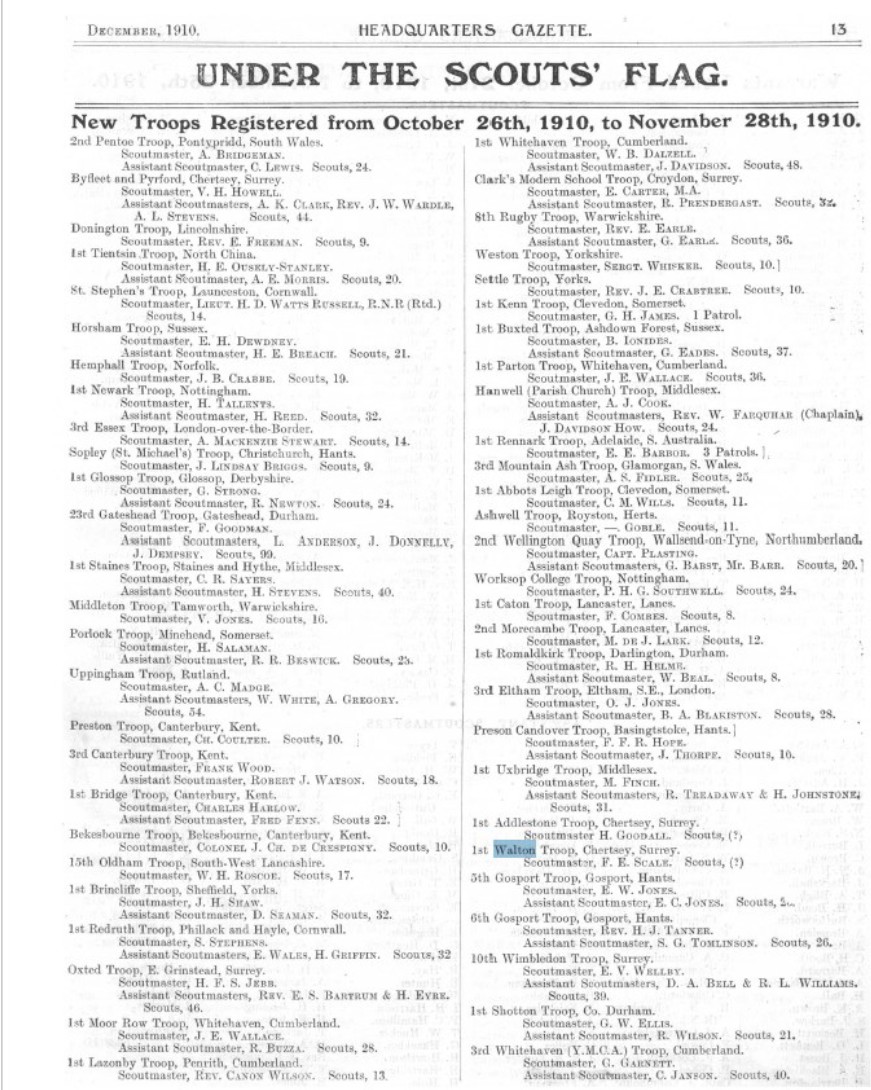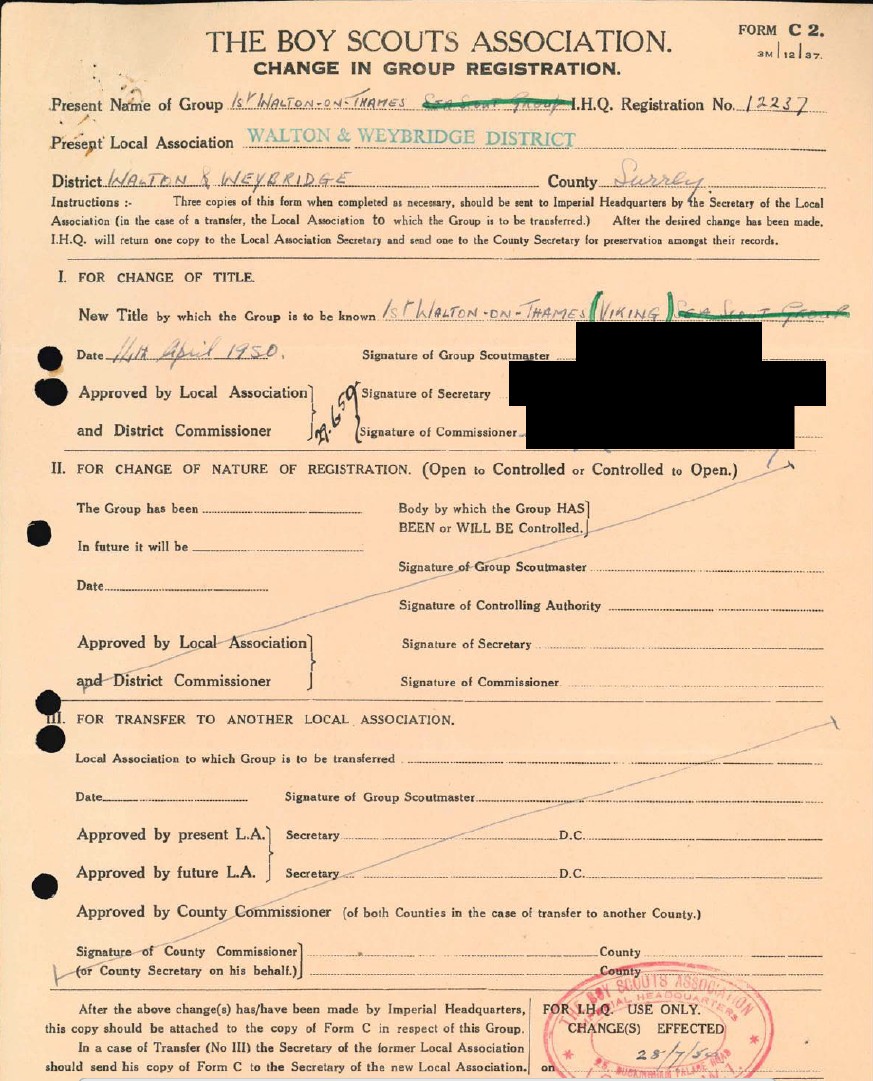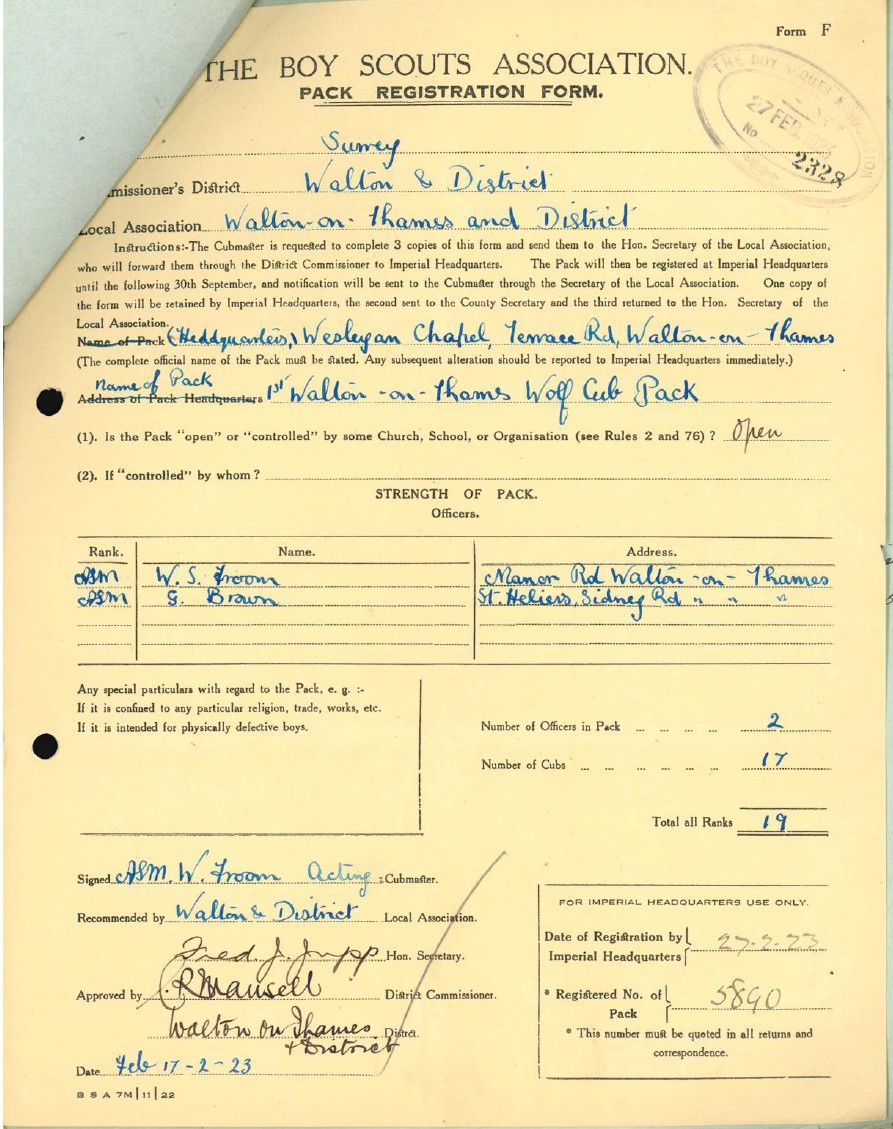1st Walton Alumni
http://www.pastwotvikings.org/index.php
An A to Z directory of past Viking members – created by Mike Moore, Jan 2013. If you know anyone connected with Vikings in the past, please leave your comments on this site
Historical Notes of 1st Walton Viking Sea Scout Group
Scouting was started by Lord Baden Powell in 1907 and that was the same year that 1st Walton was registered with Scout Headquarters as ‘Boy Scouts’. In 1910 it was the formation of Sea Scouts although it was some years before we made the change.
Wolf Cubs were formed in 1914 and immediately there were boys wanting to join as they had seen what the older boys were doing and naturally wanted to have the same fun and enjoyment.
It wasn’t until 1982 that Beavers made the headlines and the group started with the youngest section which nationally today has the largest numbers of all sections.
There were a variety of places where the Scouts met over the first years – church halls, schools, above shops, and so on. The present HQ was built as a boys club and stood closed for a time when there came a chance to have a permanent home.
At the time the building stood alone surrounded by fields with access from Sunbury Lane called Accommodation Road. Where Thamesmead Estate now stands the field had dray horses grazing for the firm of timber merchants Gridley Miskin where Jewsons are now. These horses would bring timber from barges moored at the wharf at the end of Felix Road to the yard in Terrace Road. The area grew with the housing surrounding the HQ as it is today, is and has been where youngsters have joined the group.
It was the generosity of Frank Miskin that secured the building for the group.
This year of 2012 the Group is making great strides to move the HQ from the present site to the river end of the recreation ground. To provide direct access to the river at towpath level with pupose built accommodation above to suit a modern Sea Scout Group with boys & girls in Beaver, Cub, Scout & Explorer sections.
Richard Holley, Group Scout Leader. December 2012
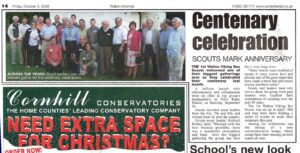
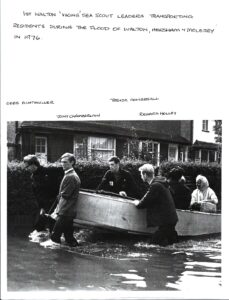
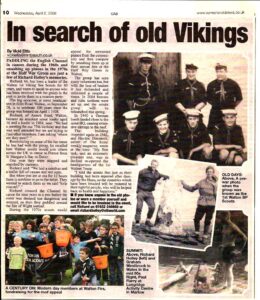
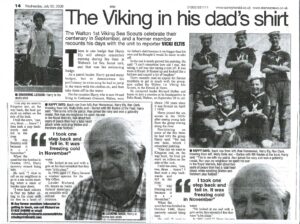
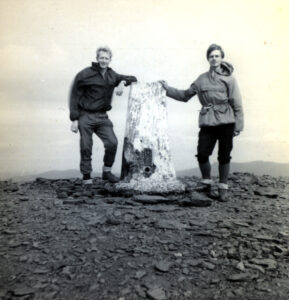
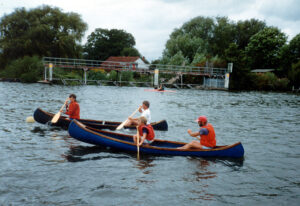
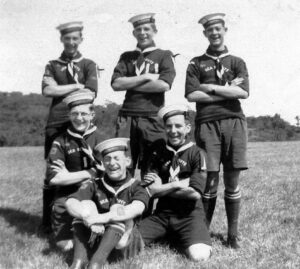
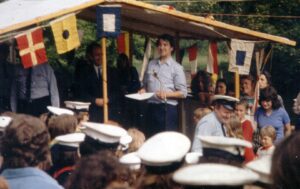
1930 until 1950
The Editors
Log book ‘Weekend at Weybridge’
by F. Haydn Dimmock, retyped by
Jeremy Cook, (Viking Leader since 2005)
It was a Liquorice Allsorts weekend at Weybridge when I went there recently.
The first instalment, a nice packet in shiny cellophane dropped from the
fold of the towel in the bedroom I was occupying in my host’s house as I went
to wash my hands before lunch on the Saturday. The second instalment was handed
to me at the conclusion of the Cub Rally in the afternoon, and for the rest,
well, I discovered packets and boxes under the bed, under the pillows, in the
wash basin and so on.. What a sacrifice of sweet rations! What a treat for a
sweet-toothed editor!
But I got more than sweetmeats at Weybridge. I found a real spirit among
the Cubs and Scouts there and enthusiasm among the Scouters.
My first task, and an extremely pleasant one, was to declare re-opened the headquarters of the 1st Walton Troop. The building had been badly damaged by a bomb which fell close by.
Fortunately, two Scouts who happened to be near escaped unharmed. I told the Scouts that just as their building had been repaired, after damage by the guns, so the countries which have been invaded will be restored to their rightful people, who will be helped back to health and happiness.
The Wolf Cubs of the district put on a good show of games and dances, and before we broke up to go to tea, I gave them a yarn. It was good to see several Scouts working with the Cubs, take the places of Cubmasters who had gone into the Services.
In the evening, I met the PLs of the district in another fine headquarters beside the river. This was their first conference, and because it was so successful is not likely to be the last. With more experience the Leaders will “open up” more than they did the first time.
So that the Leaders might know one another each rose in turn and announced his name, Troop and nickname, if any. This is a good idea for first conferences.
On Sunday morning there was a Scouts’ Own and though we had no heating in the Church Hall and we sang the hymns unaccompanied, it was a most enjoyable service.
The Guides of the district also attended.
The Guides and Scouts joined forces in the afternoon in the presenting a programme of plays at the little playhouse in Walton. There was a large audience of parents and friends. The Scouts put on a play of St. Francis of Assisi, which was quite well acted. The main Guide contribution was a Nativity Play.
There was one performer who did not appear before the footlights and was an understudy. But for her the performances would have been possible. The electrician who normally
operates the stage lighting had been called away, so his wife, who never worked the switchboard before, and with only a rough chart drawn up by her husband, stepped into the breach an put on a fine performance with her lighting effects,
Just another case of someone doing a grand job behind the scenes.
My hosts for the weekend most generously invited the Scouters of the district to come to their home on Sunday evening for an informal talk and a splendid number came along. In the midst of our discussions an air raid alert sounded and one or two of the company had to leave for civil defence duties.
What did we talk about? Why, you, of course. That is to say we yarned about Scouts and
Scouting, present and future, and while the A.A. guns kept up a symphony of sound to remind us that the only escape from war is to defeat the powers of evil and through the good in the hearts of men to build a world in which love and concord abide.
F. Haydn
Dimmock
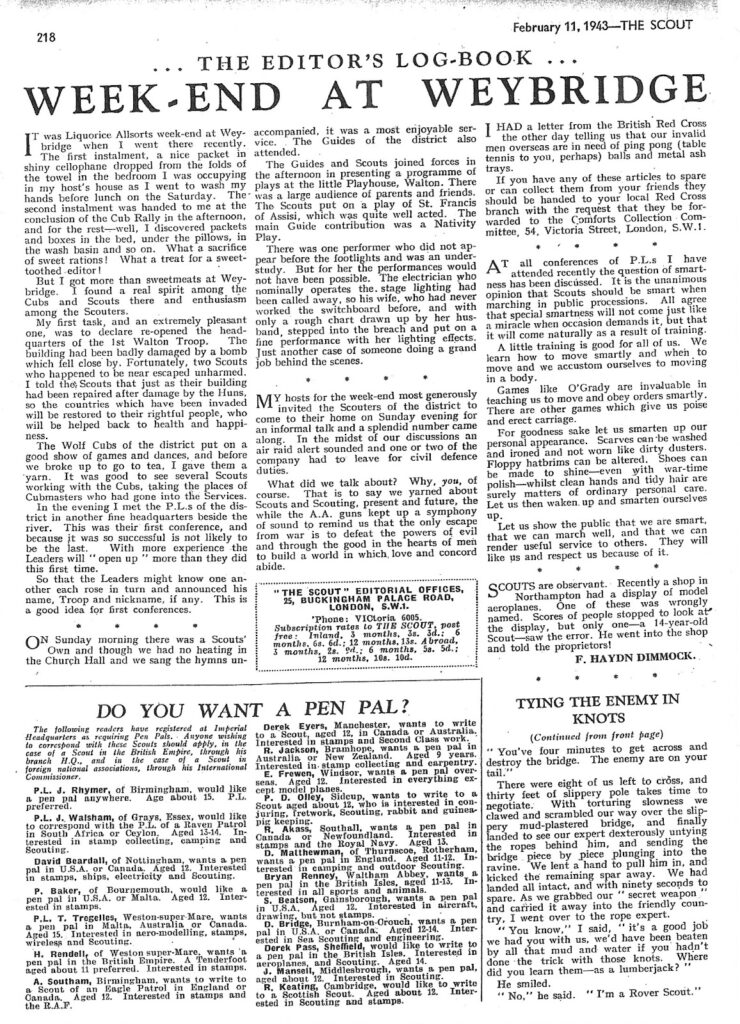
Personal reflection from Bill Cook (27th March 2004)
retyped by Jeremy Cook, (no relation) Viking SL, 2013
RE Article from ‘The Scout Magazine’ 1943 “Weekend at Weybridge discussing 1st Walton Bomb Damage
I was in the Isle of Man at the time it was published and it would been taken about this time for the Group to have got the ‘war damage’ payment.
The article
is wrong on one point, I am certain. To the best of my knowledge, NO Scouts were near at the time of the bombing. Andrew McKenzie and myself were on duty at
the Auxiliary Fire Station at the Halfway, Walton. One of the Firemen stationed at the Halfway, lived in Felix Road area and when the bombing report came through, the exact
location was not given, only the fact that it was in the Felix Road area. The Fireman was allowed a quick trip home to see if his family was ok and he gave us the information that it was the Scout Hut that had received the hit. The bomb fell just short of the main doorstep, so the doorstep took much of the blast. As far as I can remember, Andrew
and myself were the first to see the Hut and this was in the early hours of the
next morning. I do not remember any reports of any Scouts (or anyone else) being close when the bomb fell.
Scout Week in 1948
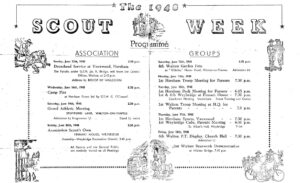
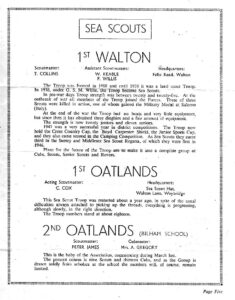
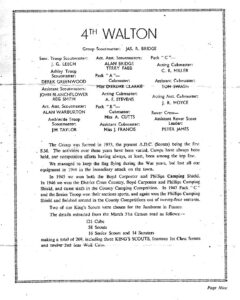
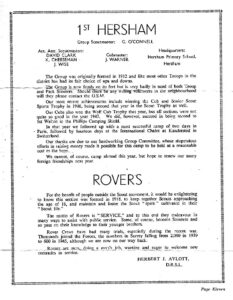
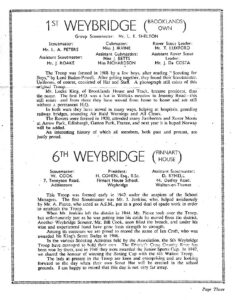
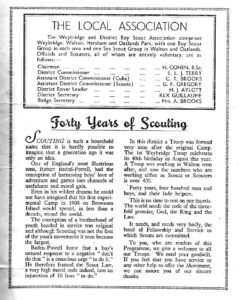
Formation to 1930
